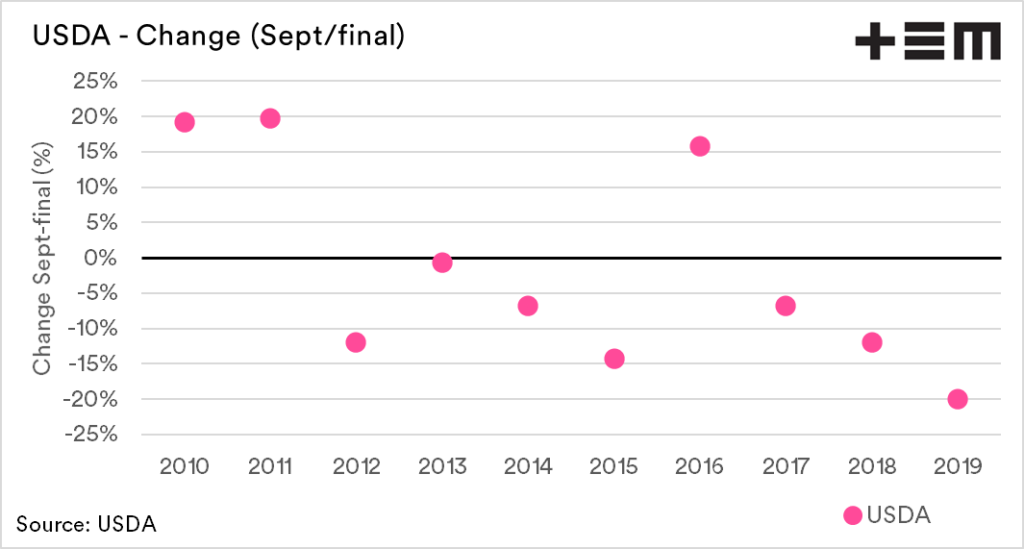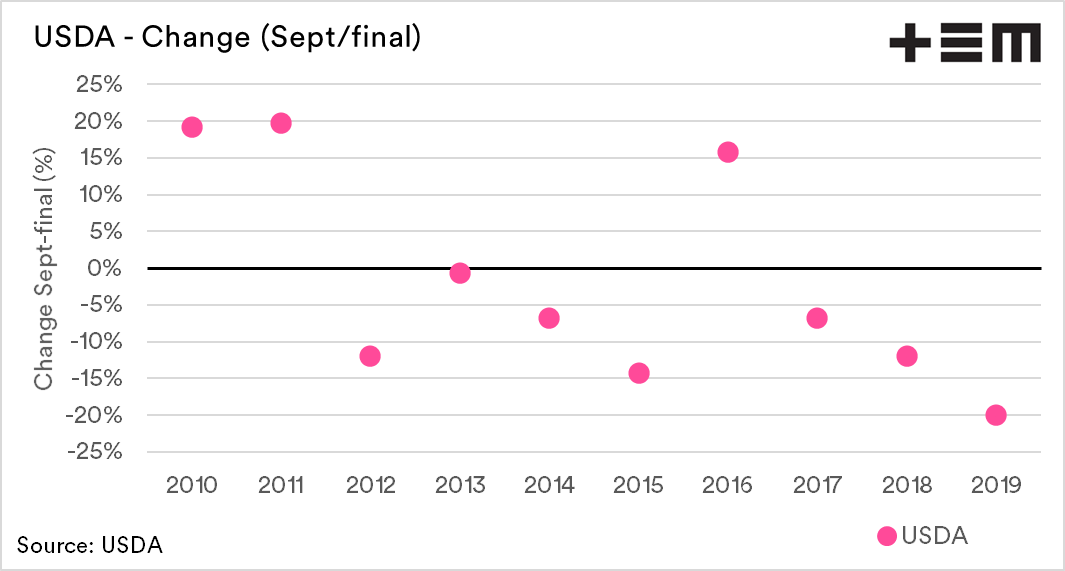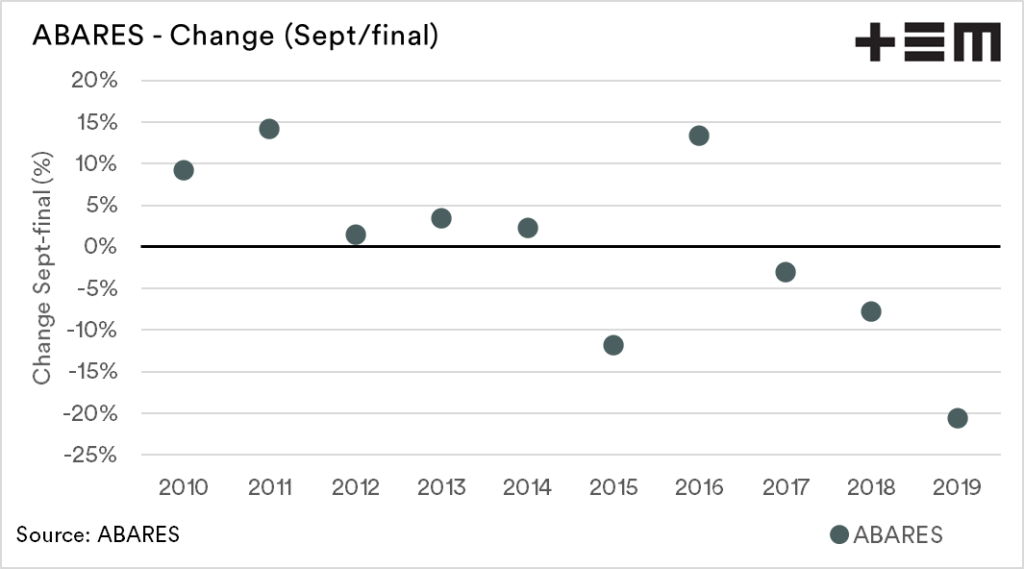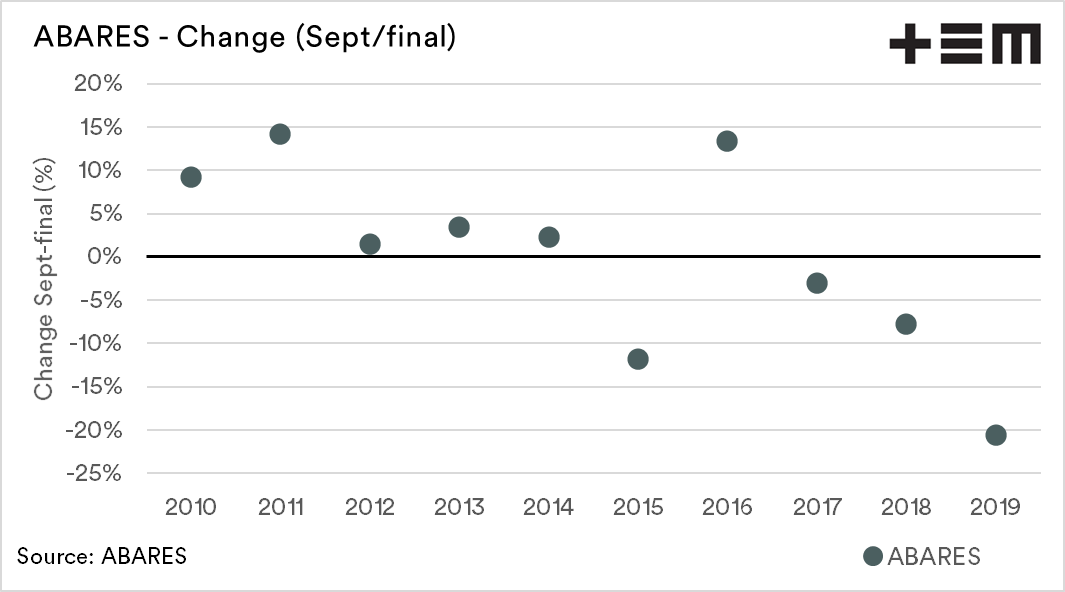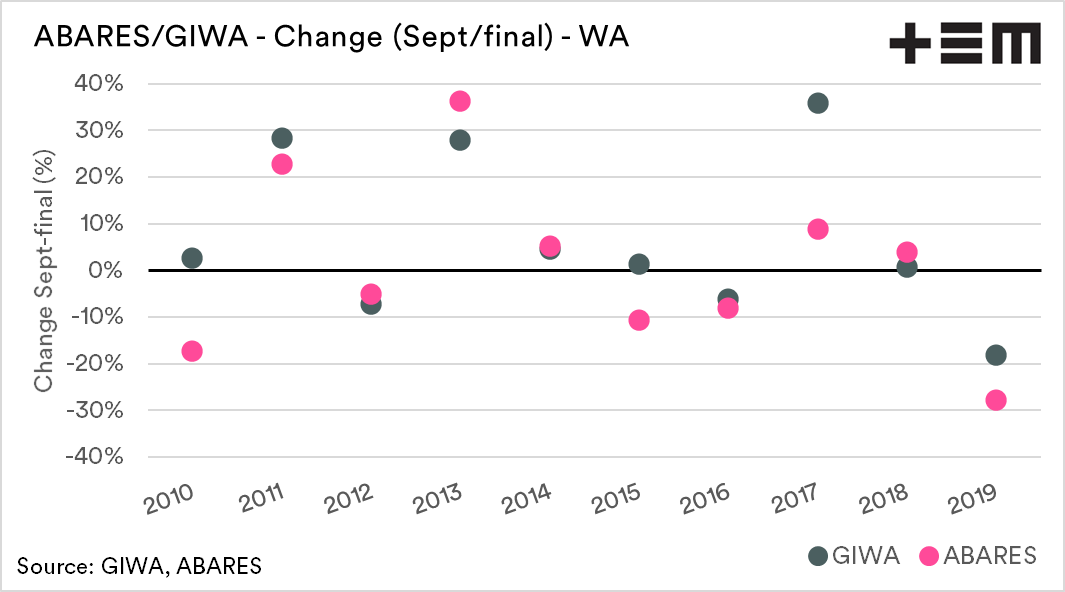How accurate are crop forecasters? (Wheat)

The Snapshot
- It is incredibly hard to forecast the Australian crop due to our volatile climate.
- The USDA tends to overestimate the Australian crop.
- ABARES are over time are more accurate than the USDA at forecasting Australian crops (in September)
- In WA forecasters have struggled with large variances in years where production has increased dramatically.
- GIWA is slightly more accurate at forecasting the WA crop than ABARES.
The purpose of this article is to examine the accuracy of crop forecasters when it comes to the Australian crop. It is essential to clarify before we get into it that predicting the Australian crop is extremely difficult. We live in a climate that can throw all sorts of hurdles up against crop production.
This is a series of articles which will look at how well the various crop forecasters perform in September versus the final result covering wheat, barley and canola. We chose to start performing this analysis in September, as before September, there is a tremendous amount of uncertainty.
USDA
Let’s start with the big boys, the US Department of Agriculture, and their World Supply and Demand Estimates. This report is produced monthly and provides an overview of world production.
The USDA is typically very optimistic in September when it comes to the Australian crop. During the last decade. The final production figure was lower seven times compared to the September estimate.
In terms of the most considerable discrepancies, the USDA is worst at predicting large crops. In 2010, 2011 and 2016 the difference between September and the final result was over 4mmt.
The most accurate year was 2013 when they were only 197kmt out!
In the chart below a positive percentage move is where the final crop was larger than the final production figure (and vice versa).
ABARES
Our local government crop forecaster releases their updates quarterly. Due to this quarterly basis, there can be large variances between reports, as for instance, a lot can happen between June and September.
ABARES have under forecast wheat production 50% of the time over the past decade. Overall during the past ABARES are more accurate between September and the final result than the USDA. The only seasons with USDA forecasting more accurately were 2013 and 2019 (albeit minimally).
My only recommendation for ABARES would be to move the early September release to later in the month, or even early October.
In the chart below a positive percentage move is where the final crop was larger than the final production figure (and vice versa).
GIWA & ABARES
As a little bonus for our West Australian subscribers, we have included a comparison of the wheat forecasts provided by Grain Industry WA and ABARES.
GIWA have struggled to predict the largest crops, such as 2011, 2013 & 2017. In these seasons GIWA were out more than 2mmt. GIWA has been within -10% to 10% of the September forecast 6 times out of ten during the past decade, versus 5 for ABARES WA forecasts.

